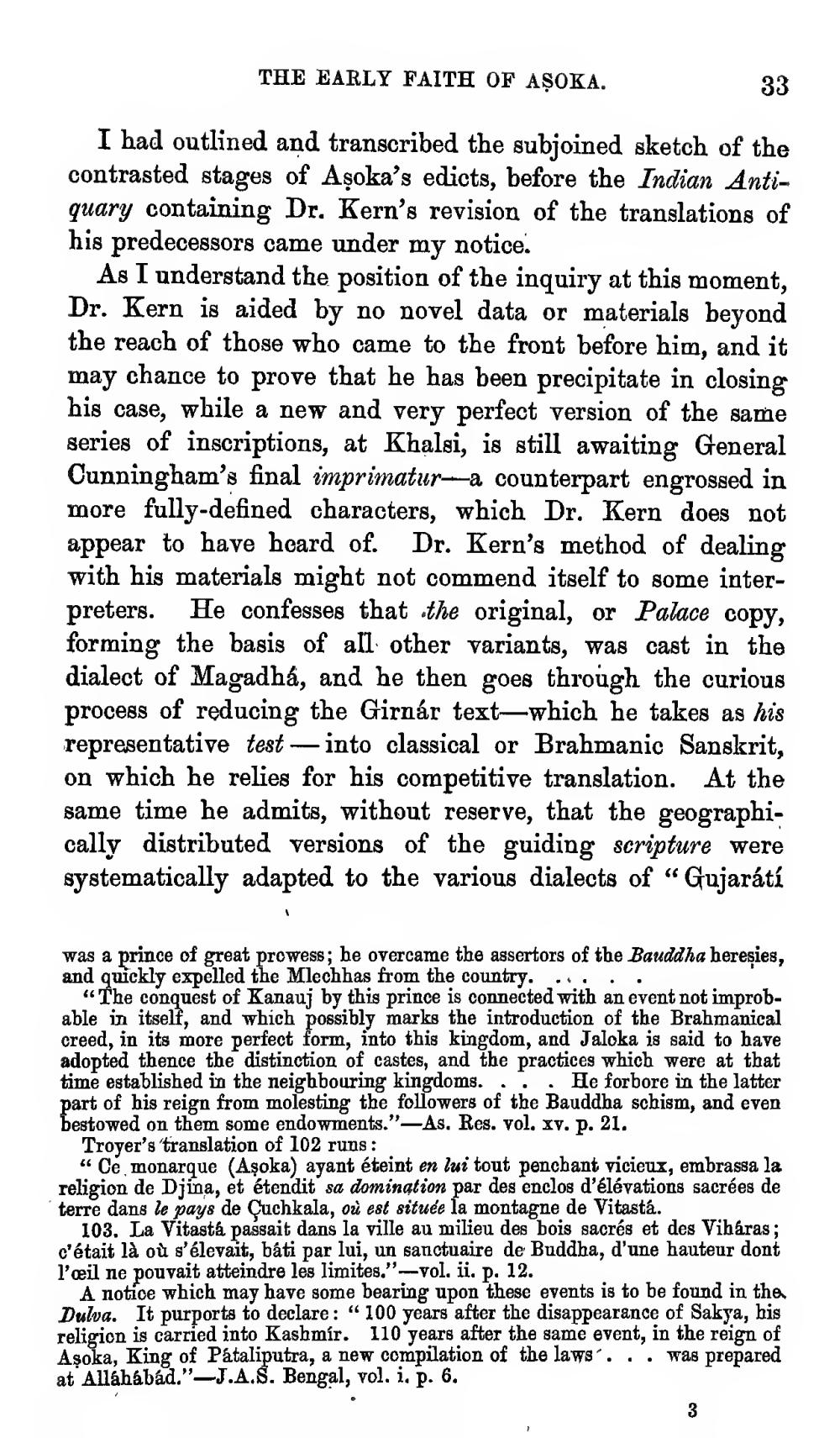________________
THE EARLY FAITH OF AŞOKA.
33
I had outlined and transcribed the subjoined sketch of the contrasted stages of Asoka's edicts, before the Indian Antiquary containing Dr. Kern's revision of the translations of his predecessors came under my notice.
As I understand the position of the inquiry at this moment, Dr. Kern is aided by no novel data or materials beyond the reach of those who came to the front before him, and it may chance to prove that he has been precipitate in closing his case, while a new and very perfect version of the same series of inscriptions, at Khalsi, is still awaiting General Cunningham's final imprimatur—a counterpart engrossed in more fully-defined characters, which Dr. Kern does not appear to have heard of. Dr. Kern's method of dealing with his materials might not commend itself to some interpreters. He confesses that the original, or Palace copy, forming the basis of all other variants, was cast in the dialect of Magadhá, and he then goes through the curious process of reducing the Girnár text—which he takes as his representative test — into classical or Brahmanic Sanskrit, on which he relies for his competitive translation. At the same time he admits, without reserve, that the geographically distributed versions of the guiding scripture were systematically adapted to the various dialects of “Gujarátí
was a prince of great prowess; be overcame the assertors of the Bauddha beresies, and quickly expelled the Mlechhas from the country. .....
“The conquest of Kanauj by this prince is connected with an event not improbable in itself, and which possibly marks the introduction of the Brahmanical creed, in its more perfect form, into this kingdom, and Jaloka is said to have adopted thence the distinction of castes, and the practices which were at that time established in the neighbouring kingdoms. . . He forbore in the latter part of his reign from molesting the followers of the Bauddha schism, and even bestowed on them some endowments." -As. Res. vol. xv. P. 21.
Troyer's 'translation of 102 runs :
“ Ce monarque (Aşoka) ayant éteint en lui tout penchant vicieux, embrassa la religion de Djina, et étendit sa domination par des enclos d'élévations sacrées de terre dans le pays de Cuchkala, où est située la montagne de Vitastá.
103. La Vitasta passait dans la ville au milieu des bois sacrés et des Viháras: c'était là où s'élevait, báti par lui, un sanctuaire de Buddha, d'une hauteur dont l'oeil ne pouvait atteindre les limites."-Vol. ii. p. 12.
A notice which may have some bearing upon these events is to be found in the Dulva. It purports to declare: “100 years after the disappearance of Sakya, his religion is carried into Kashmír. 110 years after the same event, in the reign of Asoka, King of Pataliputra, a new compilation of the laws'. .. was prepared at Allahabad."-J.A.S. Bengal, vol. i. p. 6.




